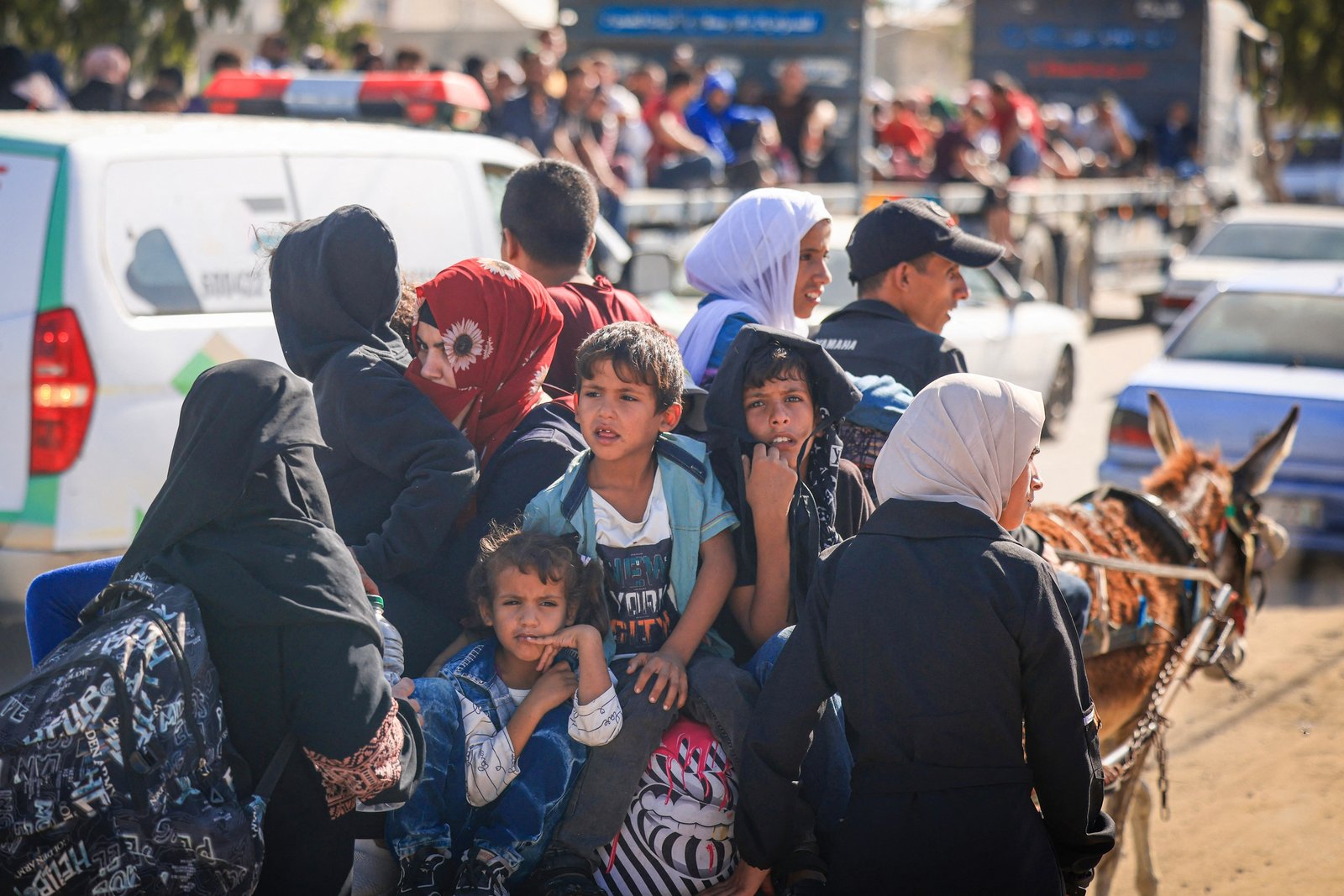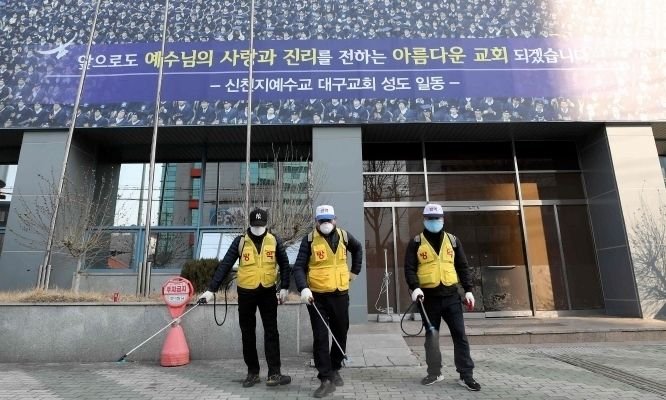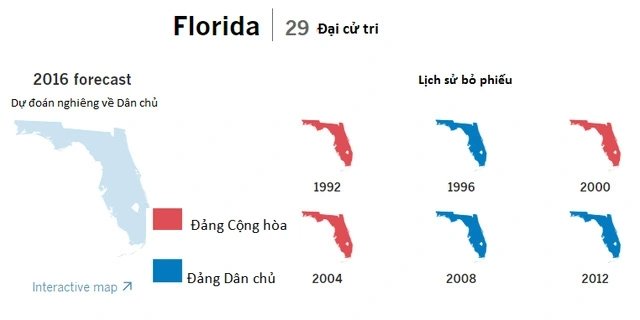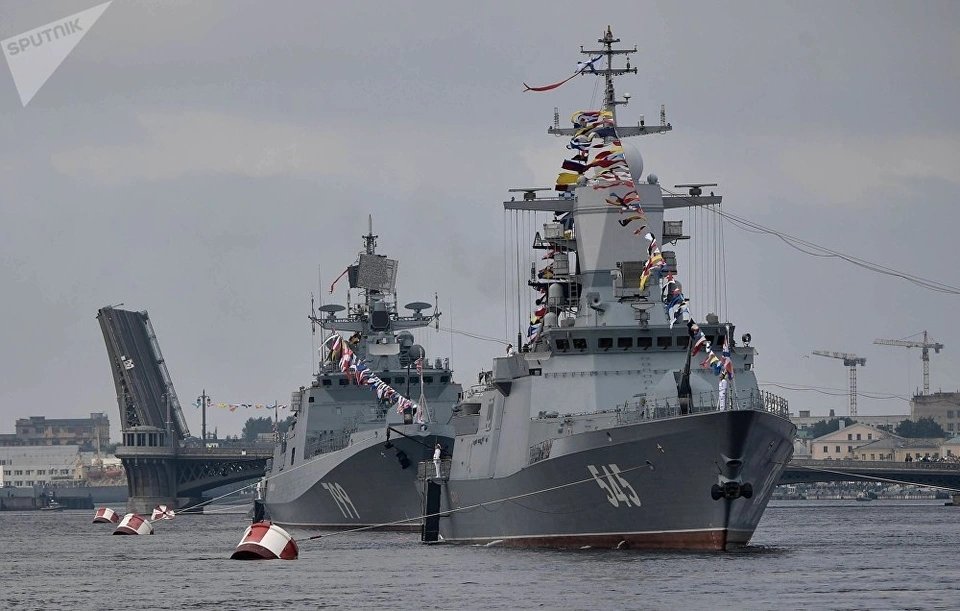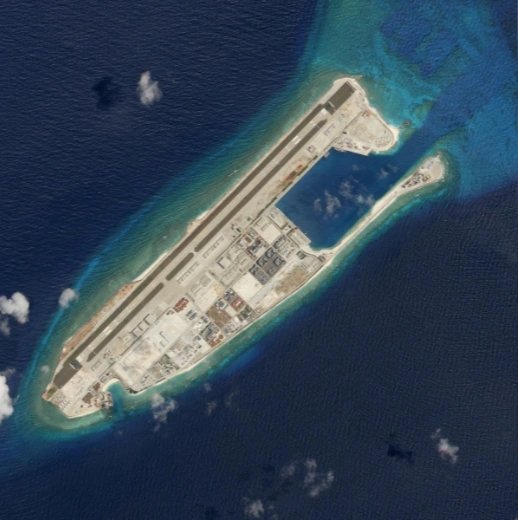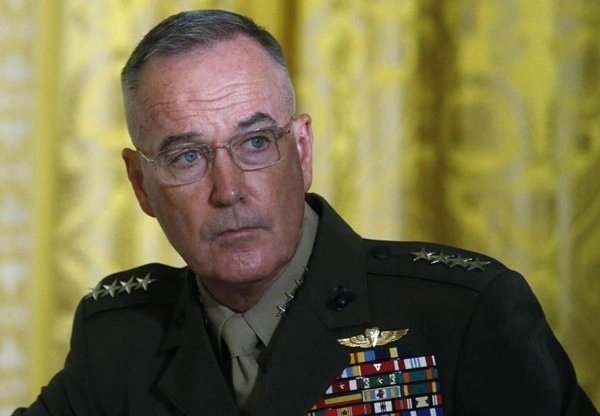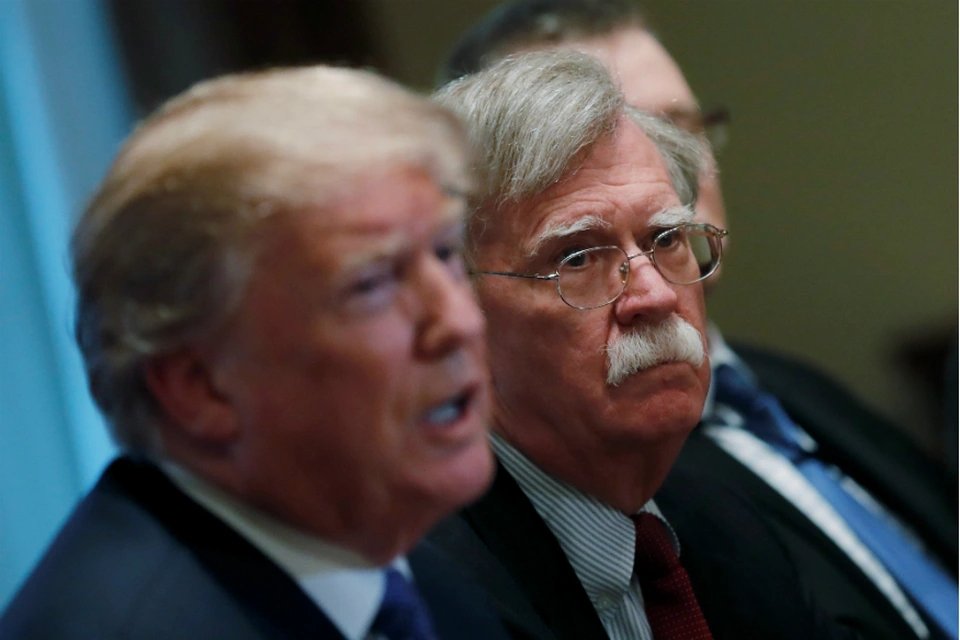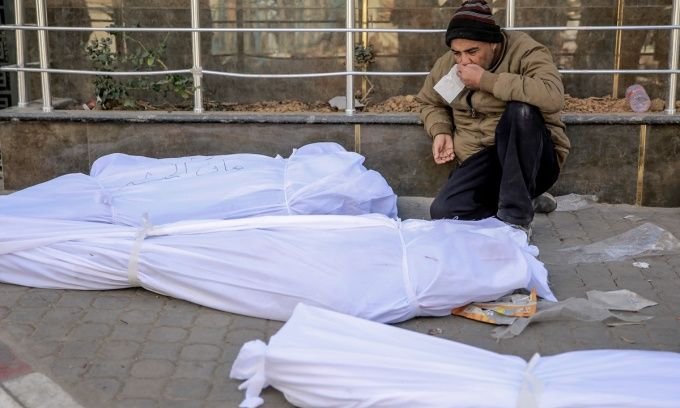
30 trucks carrying aid were escorted by the Israeli army (IDF) one after another into the Gaza Strip.
When they saw the headlights of cars approaching Nabulsi roundabout at around 4:40 a.m. on February 29, the crowd hurriedly crowded together and rushed toward the convoy, according to accounts from Israeli officials and officials.
`I know it’s dangerous, but we’re starving,` Ashi said.
Suddenly, gunfire rang out, as people surrounded the aid trucks.
A man next to bags containing the victims’ bodies during the incident at Nabulsi roundabout in the northern Gaza Strip on February 29.
Near the end of the aid convoy, the crowd also surrounded the cargo trucks.
Israeli soldiers in the convoy felt threatened and started shooting, causing thousands to flee in panic, senior IDF officers said.
At dawn, witnesses said they saw dozens of bodies lying in front and behind the convoy.
Gaza Strip health authorities announced a total of 112 people were killed and hundreds were injured in the shooting.
For many months, the United Nations (UN) and international aid groups have been responsible for virtually all humanitarian operations in Gaza.
The UN World Food Program warns that Gaza is facing the worst child malnutrition situation globally and is on the brink of famine.
Israel has completely blocked Gaza since October 2023, allowing only limited humanitarian aid items to enter the area, such as water, medicine, food, tents and fuel.
For the Israeli government, allowing aid into Gaza is a sensitive issue.
The tragedy on February 29 occurred during the fourth humanitarian aid mission that Israeli forces participated in since last weekend, Rear Admiral Daniel Hagari, an Israeli military spokesman, said.
The UN and international aid groups have been forced to scale back their humanitarian operations in northern Gaza over the past few weeks because of fierce fighting and lawlessness.
On February 5, a convoy of American trucks carrying food to northern Gaza came under fire from the Israeli navy as they waited near a checkpoint in the coastal area of Deir al-Balah, according to UN officials.
The World Food Program, one of the two main UN agencies responsible for food distribution in the region, attempted to resume food deliveries to the northern Gaza Strip on February 18.
In the context of aid groups facing difficulties, Israel faces increasing pressure, especially from the US, forcing them to participate in resolving the situation.
US officials have asked Israel to open at least one new route into the northern Gaza Strip in an effort to speed up aid.
President Joe Biden’s administration also urged Israel to stop attacking Hamas gunmen participating in security support for aid convoys, after they were repeatedly attacked by Israeli forces.
On the night of February 25 and early morning of February 26, the Israeli army carried out its first humanitarian mission in Gaza, hiring private contractors to bring food to the north of the area.

People gathered on a street in Gaza City to wait for aid to be dropped from planes on March 1.
`UN organizations said they would not provide aid so we partnered with others and took advantage of existing distribution capabilities inside the Gaza Strip to get food to the north,` the spokesman said.
The Israeli army is increasingly playing a more proactive role in participating in protecting these convoys.
Minutes after the convoy passed an Israeli checkpoint, a crowd of civilians quickly rushed toward them, forcing them to stop, Rear Admiral Hagari said.
The escorting tank tried to `disperse the crowd by firing several rounds into the air,` he said.
Belal Alisi, 28 years old, and his brother Khalid and thousands of people gathered at Nabulsi roundabout early in the morning of February 29.
The two brothers took some food from the convoy of trucks to take home.
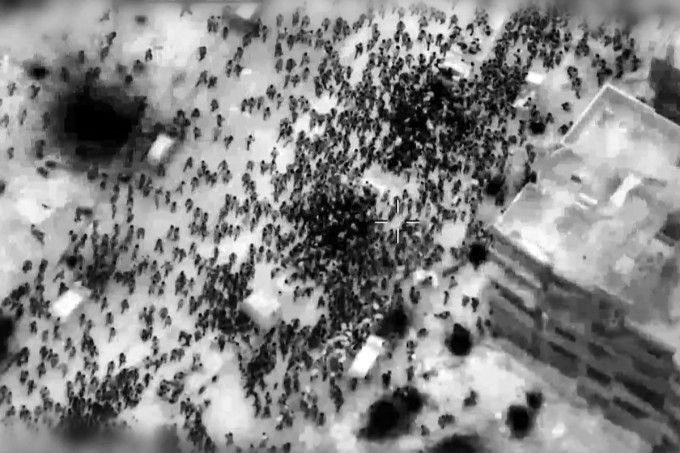
The crowd surrounded the aid truck during the shooting on February 29.
In the hours that followed, hundreds of people were transferred to hospitals in the northern Gaza Strip.
Almaqadma rushed to the emergency room.
He also saw some patients with shrapnel wounds.
Sami Fayyad, 40 years old, was also present at Nabulsi roundabout to receive aid.
Fayyad survived.

